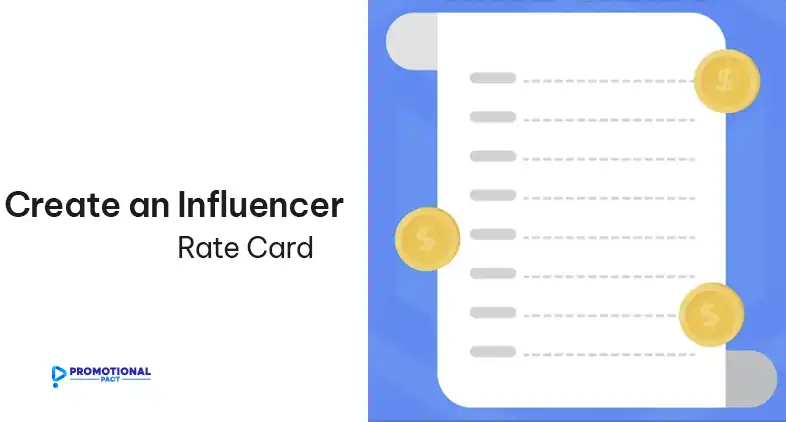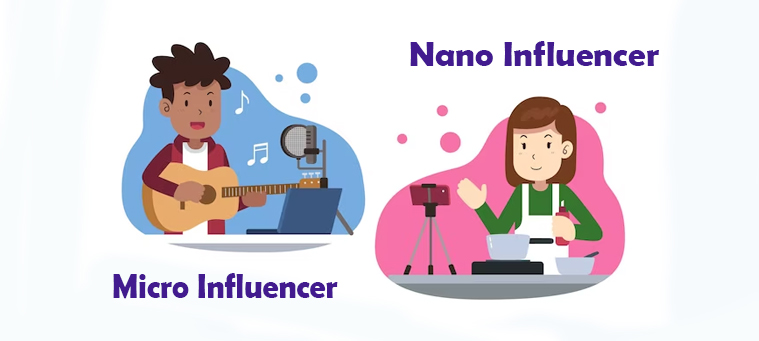
Negotiating fair compensation with influencers is always a hassle. This is where an influencer rate card becomes essential. But what exactly is it, and why is it so powerful?
For influencers, a rate card serves as a negotiation tool, presenting your value upfront and positioning you as a professional. For brands, it offers a straightforward way to assess costs and avoid misunderstandings.
Whether you’re a micro-influencer or have millions of followers, creating a well-thought-out rate card can enhance your partnerships, ensure proper compensation, and help you stand out in an increasingly competitive market.
Determining Your Value as an Influencer
How do you determine your worth as an influencer? Many creators struggle with this question, often underestimating their value. It’s important to remember that your rate isn’t just about the numbers on your social media analytics—it’s about the time, creativity, and influence you bring to the table.
Know Your Worth
Being an influencer requires a significant investment of time and resources. From creating high-quality content to building a loyal audience, your efforts go far beyond posting a few photos or videos. Consider factors like production costs (e.g., camera equipment, editing software), your unique expertise, and the alignment of your content with a brand’s image.
For example, a travel influencer who meticulously plans trips, captures stunning visuals, and writes engaging narratives provides much more value than a simple post. Don’t undervalue these efforts.
Metrics Matter—but They’re Not Everything
It’s easy to get caught up in follower counts or engagement rates, but these metrics only tell part of the story. While a high follower count can be enticing, brands are often more interested in how well your audience aligns with their target demographic and the kind of engagement your posts receive. For instance, a nano-influencer with 5,000 highly engaged followers in a niche market may command higher rates per engagement than someone with a million disengaged followers.
Research Industry Standards
Understanding what other influencers charge is key to setting realistic yet competitive rates. Reports from platforms like Influencer Marketing Hub or insights shared by peers can provide benchmarks. For example, as of 2024, average rates per Instagram post range from $100 for nano-influencers to $10,000 or more for mega-influencers. Use these figures as a reference point while tailoring your pricing to reflect your unique strengths.
What Are the Essential Elements of an Influencer Rate Card
Creating a compelling rate card requires careful thought and attention to detail. Think of it as your sales pitch on paper—or screen—that communicates your professionalism and value. Below are the key components to include:
Header: First Impressions Matter
Your rate card’s header is the first thing a brand sees, so make it count. Use an eye-catching title, such as “Let’s Collaborate” or “Your Next Brand Partner,” paired with your logo or a professional image. Adding your brand colors ensures consistency with your online persona.
About Me: Build a Connection
This section introduces who you are as an influencer. Keep it concise but engaging. Highlight your niche, expertise, and personality. For example:
“Hi, I’m Sarah, a lifestyle influencer passionate about sustainable living. Through my Instagram and YouTube channels, I share tips and inspiration with an audience of 50,000 eco-conscious individuals eager to make a positive impact.”
The goal is to make brands feel confident that you’re the right fit for their message.
Showcase Your Data
Metrics are essential for demonstrating your reach and influence. Include the following:
- Followers: Total audience size across platforms.
- Engagement Rate: A high engagement rate (e.g., 5–10%) often matters more than large follower numbers.
- Demographics: Highlight key stats like audience age, gender, location, or interests.
Example Table:
| Platform | Followers | Engagement Rate | Audience Demographics |
| 25,000 | 6.2% | 75% female, ages 18–34, US | |
| YouTube | 10,000 | 8.5% | 80% male, ages 25–44, Canada |
List Your Services
Detail what you offer and tailor it to your platforms. For instance:
- Instagram: Sponsored posts, reels, stories, or carousel posts.
- TikTok: Viral challenges, product demonstrations, or stitched videos.
- YouTube: Dedicated reviews, haul videos, or integrated brand mentions.
For clarity, present services in a way that aligns with common brand expectations, keeping descriptions straightforward and professional.
How to Set Pricing and Packages
Setting your rates can feel daunting, but clarity is key. Organize this section into base rates, packages, and optional add-ons to give brands flexibility.
Base Rates for Individual Services
For each platform, list the starting price for common deliverables. For instance:
- Instagram post: $200
- Instagram story: $75
- TikTok video: $300
Packages for Better Value
Offer discounts for bundled services. For example:
- Instagram post + 2 stories: $250 (saves $25)
- Multi-platform package: Instagram post + TikTok video + YouTube mention: $800
Add-On Fees
Include additional services like:
- Usage Rights: $150 for 3 months of brand usage.
- Exclusivity: $500 to avoid working with competitors during the campaign.
Clearly outline these options to avoid miscommunication during negotiations.
Creating and Maintaining Your Influencer Rate Card
A rate card is more than just a list of prices; it’s a representation of your personal brand. Crafting it with care ensures you leave a lasting impression on potential collaborators. Additionally, keeping it updated is essential for staying relevant in the fast-paced world of influencer marketing.
Using Templates and Design Tools
Design matters when creating a professional-looking rate card. Tools like Canva, Adobe Spark, or even Microsoft PowerPoint offer customizable templates tailored for influencers. Choose layouts that reflect your brand identity while maintaining a clean and organized structure.
For example, a beauty influencer might use soft pastel colors and elegant fonts, while a fitness influencer might lean toward bold tones and sharp typography. Incorporate visuals, such as professional photos, screenshots of successful posts, or testimonials, to add credibility and appeal.
Regular Updates: Staying Relevant
The influencer landscape evolves rapidly, and your rate card should too. Revisit your document at least every three months to ensure it reflects your latest:
- Metrics: Adjust for follower growth or changes in engagement rates.
- Pricing: Increase rates as your value grows. For example, if your engagement rate spikes, that’s leverage to justify higher prices.
- Services: Introduce new offerings, such as emerging platform features (e.g., Instagram Threads or YouTube Shorts).
Negotiating with Confidence
Your rate card serves as a starting point for discussions, but flexibility is often necessary. When brands propose budgets that differ from your listed rates, approach the situation with an open mind.
- Understand Their Budget: Ask questions to gauge their expectations and align your offerings with their needs.
- Value Over Price: Emphasize the unique benefits of working with you, such as your niche audience or creative approach, rather than just focusing on the price tag.
Pro Tip: Always leave room for negotiation. For instance, if your base rate for a post is $300, quote slightly higher initially, allowing space for compromise.
Additional Tips for a Successful Influencer Rate Card
While a well-crafted rate card is a powerful tool, its success depends on how effectively you use and present it. Here are some key strategies to maximize its impact:
Offer Custom Quotes When Necessary
Although having a comprehensive rate card is essential, sometimes sending a custom quote is more appropriate. For example, if a brand wants a highly specific deliverable or long-term partnership, tailor your proposal to highlight the value they’ll receive while addressing their unique needs.
Focus on Brand Alignment
Not every brand collaboration is worth pursuing, even if the payment is attractive. Work with companies whose values resonate with your own and whose products appeal to your audience. Authentic partnerships typically lead to higher engagement, which translates to better results for both parties.
For example, a fitness influencer who promotes an energy drink that aligns with their healthy lifestyle will likely achieve better audience reception than endorsing an unrelated product.
Tap into the Power of Micro-Influencers
If you’re creating a rate card for a group of influencers or building one for yourself as a micro-influencer, emphasize engagement rates over follower count. Studies have shown that micro-influencers often deliver 60% higher engagement than their larger counterparts, making them a cost-effective option for brands.
Leverage Influencer Marketing Platforms
Platforms like AspireIQ, Upfluence, or Influencity can help streamline your collaborations. These tools not only connect influencers with brands but also provide analytics to support your rate card’s metrics.
Example Template of an Ideal Influencer Rate Card
Let’s look at an example of what a polished influencer rate card might include:
Header:
“Your Next Social Media Partner – [Influencer Name]”
Branded with vibrant colors and featuring a professional headshot.
About Me Section:
Brief bio: “Lifestyle influencer specializing in minimalist living, with an engaged audience of 50,000 Instagram followers.”
Services:
- Instagram Post: $250
- Instagram Story Set (3 slides): $100
- TikTok Video: $400
Add-Ons:
- Usage Rights (6 months): $200
- Exclusivity: $600
Contact Info:
Website: [YourSite.com]
Email: [YourEmail@gmail.com]
Social Links: [@YourHandle]
Why a Rate Card is Your Key to Success
Creating a professional influencer rate card isn’t just about setting rates—it’s about showcasing your value and making collaborations seamless. By understanding your worth, tailoring your offerings to align with brand needs, and updating your rate card regularly, you position yourself as a credible and reliable partner.
With careful attention to design, clear communication, and a deep understanding of the influencer landscape, your rate card will become an invaluable asset. It’s not just a pricing sheet; it’s a tool for building trust, attracting partnerships, and growing your influence in the industry.
FAQs
How do I decide what to charge as a new influencer?
Start by researching industry averages for your niche and follower count. Factor in your engagement rate, production costs, and the time required to create content.
Can I use the same rate card for all brands?
Yes, but customize your proposals when necessary to reflect specific campaign goals or unique brand requirements.
What if a brand says my rates are too high?
Be open to negotiation, but don’t undervalue yourself. Offer flexible packages or scaled-down services to accommodate smaller budgets.

